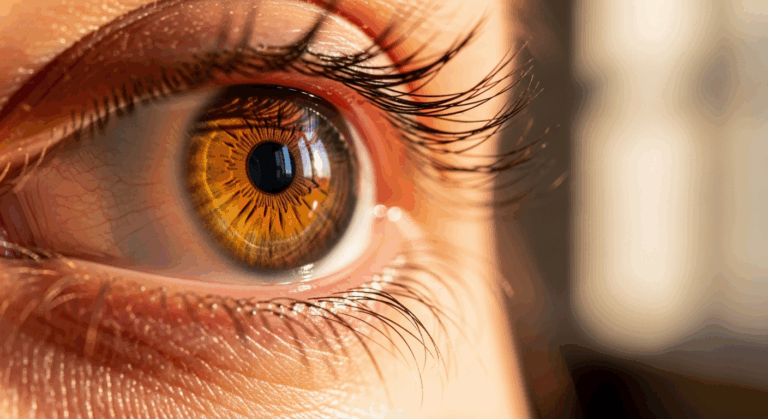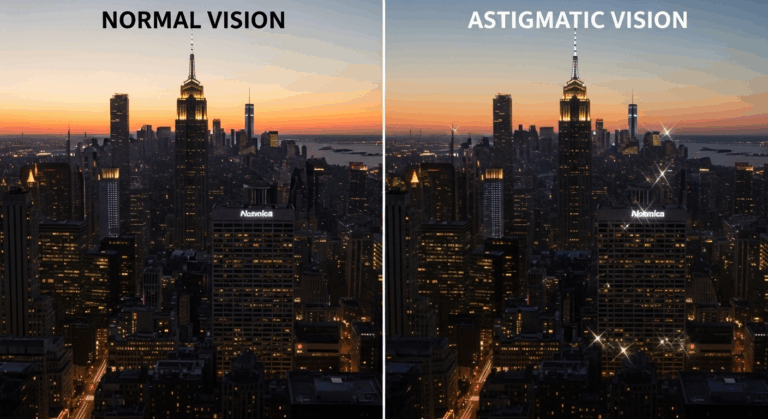Ever stared at that little slip of paper from your eye doctor and felt like you were trying to crack a secret code? All those abbreviations, plus and minus signs, and random numbers can be baffling. OD, SPH, AXIS… what does it all mean?
We get it. But here’s the good news: it’s much simpler than it looks. Understanding your glasses prescription is the first step toward becoming a savvy eyewear shopper and taking control of your vision health.
Let’s break down that “secret code” together, piece by piece, so you can read your prescription with total confidence.
First Things First: OD vs. OS (Which Eye is Which?)
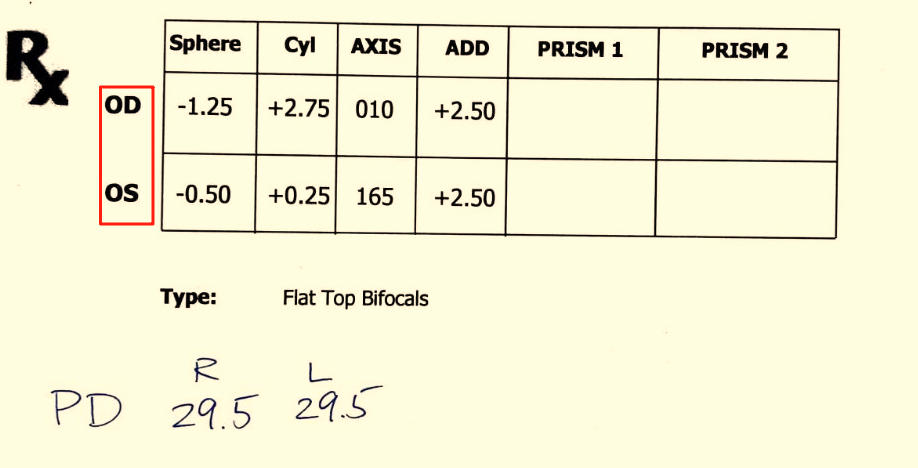
Before you get to the numbers, you’ll see two letters that are the foundation of your entire prescription: OD and OS. These are just old-school Latin terms that tell us which eye we’re talking about.
- OD stands for Oculus Dexter, which is Latin for Right Eye.
- OS stands for Oculus Sinister, which means Left Eye.
Occasionally, you might see OU (Oculus Uterque), which means Both Eyes. Some modern clinics now use the simpler RE (Right Eye) and LE (Left Eye), but OD and OS are still the industry standard. Simple enough, right?
The Big Three: Understanding SPH, CYL, and AXIS
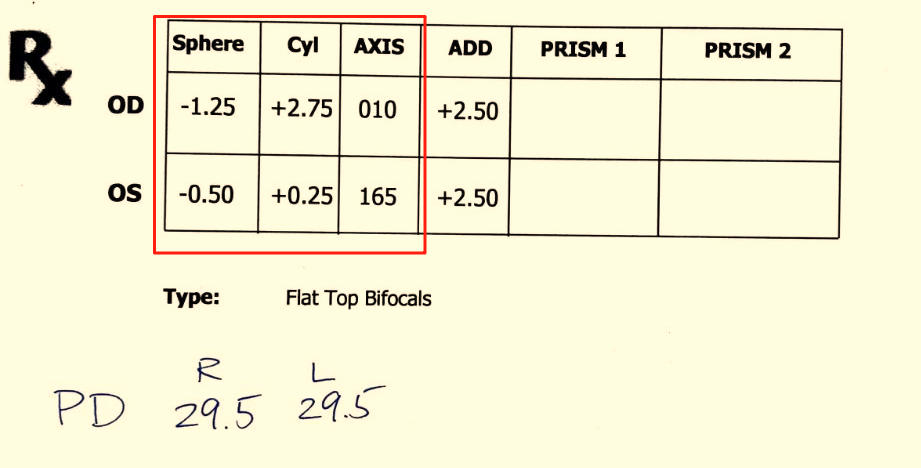
This is the core of your prescription. These three values work together to correct your specific vision issues, and they are measured in a unit called diopters (D). Think of a diopter as the focusing power of your lens.
SPH (Sphere): The Main Power of Your Lens
The Sphere value is the primary correction for either nearsightedness or farsightedness. It’s a uniform power across the entire lens.
- Is the number negative (-)? You’re nearsighted (myopic). This means you can see things up close just fine, but things far away get blurry. The further the number from zero (like -4.25 vs -1.25), the stronger your prescription.
- Is the number positive (+)? You’re farsighted (hyperopic). This can make it tough to focus on things nearby, sometimes causing headaches and eye strain. Again, a higher number means a stronger lens is needed.
If you see “PL” or “Plano” in this box, it means you have no spherical correction needed for that eye.
CYL (Cylinder) & AXIS: The Fix for Astigmatism
If you see numbers in these two columns, it means you have an astigmatism. Don’t let the name intimidate you; it’s incredibly common. Astigmatism simply means your cornea is shaped a bit more like a football than a perfectly round basketball. This irregular shape causes light to focus unevenly, making your vision blurry at any distance.
- CYL (Cylinder): This number indicates how much astigmatism you have. It’s the “extra” power needed to correct that football-like curve. Just like Sphere, it can be positive or negative. If this box is empty, you have no astigmatism in that eye.
- AXIS: This number, always between 1 and 180, is the “where.” It tells the lab the precise angle (in degrees) to position the cylinder correction in your lens. Think of it as the orientation of your astigmatism. You’ll only ever see an Axis value if there’s a Cylinder value.
What Are Those Other Numbers on My Prescription?
Some prescriptions go beyond the big three to address more specific vision needs.
ADD (Addition): The Power for Reading
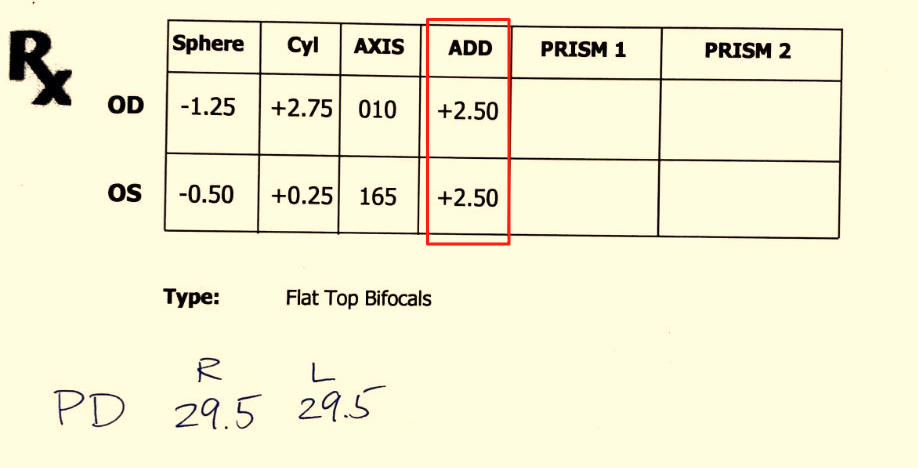
If you’re over 40, you might notice a number in the “ADD” column. This is the added magnifying power for presbyopia, the natural, age-related difficulty we all experience when trying to focus up close.
This “Add Power” is for the lower portion of bifocal or progressive lenses, helping you read a book or see your phone clearly. It’s always a positive number (+) and is typically the same for both eyes.
Prism & Base: For Eye Alignment
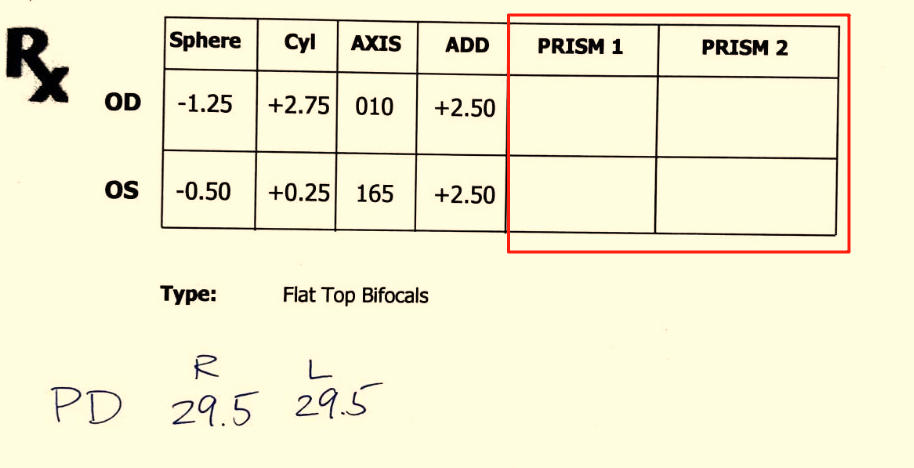
A small number of people need “Prism” correction. This is prescribed when your eyes aren’t perfectly aligned, which can cause double vision or severe eye strain. The prism bends light in a way that helps your two eyes work together as a team. If you see this on your prescription, you’ll find two values: Prism (the amount) and Base (the direction: Up, Down, In, or Out).
Don’t Forget Your Pupillary Distance (PD)
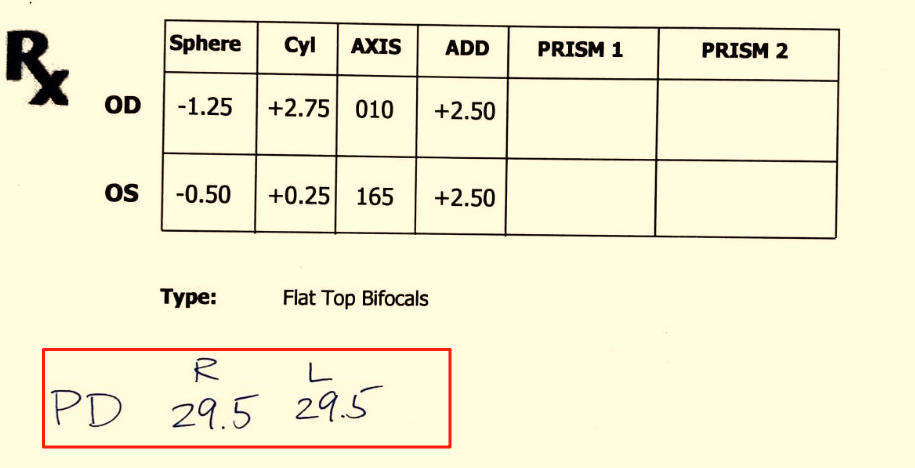
Your Pupillary Distance (PD) is the distance between the centers of your pupils, measured in millimeters. This measurement is absolutely critical because it ensures the optical center of your new lenses lines up exactly with your eyes. A mismatched PD can lead to blurry vision and headaches.
Sometimes the PD is written on your prescription, but often it isn’t. Don’t be afraid to ask your optician to measure and include it. It will make ordering glasses—especially online—much easier and more accurate.
Important Reminders from Your Eye Care Expert
A couple of final, crucial points to keep in mind:
Your Prescription Has an Expiration Date
Most eyeglass prescriptions are valid for one to two years. Why? Because your vision can change! Regular eye exams not only keep your prescription current but are also essential for monitoring the overall health of your eyes and catching serious conditions like glaucoma or cataracts early.
Glasses and Contact Lens Prescriptions Are NOT the Same
This is a big one. You cannot use your glasses prescription to buy contact lenses. A contact lens sits directly on your eye, while a glasses lens sits a small distance away. This requires different measurements and power calculations. A contact lens prescription will include extra details like Base Curve (BC) and Diameter (DIA), so always make sure you have the right prescription for the right product.
Let’s See It in Action: A Sample Prescription
| SPH | CYL | Axis | ADD | |
|---|---|---|---|---|
| OD (Right) | -2.50 | -1.00 | 90 | +2.00 |
| OS (Left) | -2.00 | +2.00 | ||
| PD: 64 |
Translation:
- Right Eye: Nearsighted (-2.50) with astigmatism (-1.00) at a 90-degree axis.
- Left Eye: Nearsighted (-2.00) with no astigmatism.
- Both Eyes: Need an additional +2.00 power for reading (this person would need bifocals or progressives).
- Pupillary Distance: 64 mm.
See? Once you know the language, it’s not so mysterious. Now you’re equipped to understand your vision needs and confidently find the perfect pair of glasses. When you have questions, never hesitate to ask your optometrist or a certified optician—we’re here to help you see clearly.

